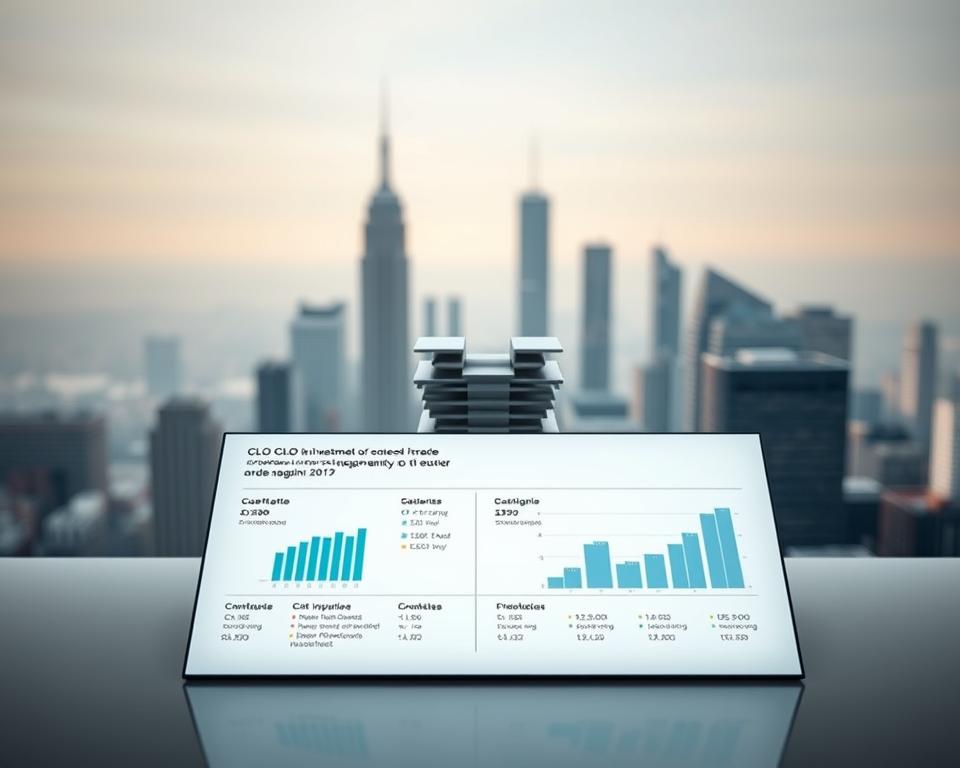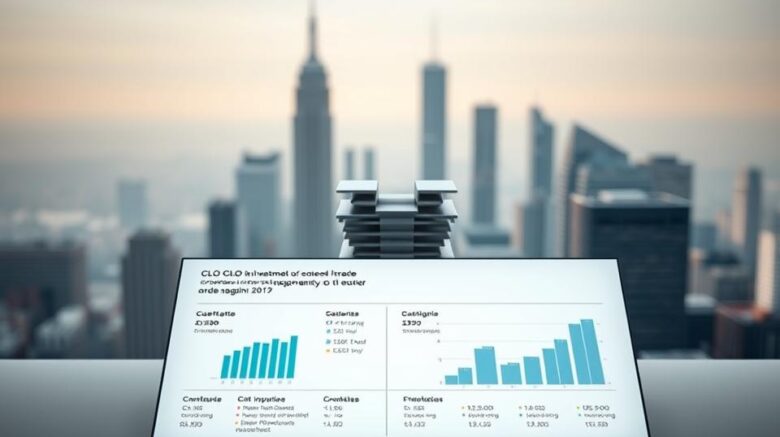A Guide to Investing in CLO Equity Funds: Essential Insights
Over the last thirty-five years, the CLO market has expanded dramatically to become a $1.1 trillion cornerstone of corporate finance, with US BSL CLOs making up roughly 68% of US corporate loan demand.
CLO equity captures the difference between loan interest earned and debt owed to CLO debtholders, offering a unique investment opportunity with potential double-digit returns. This asset CLO equity funds class combines the benefits of private equity with bond-like cash flows.
Main Points

- The equity slice of a CLO sits at the top of both risk and return in the $1.1 trillion CLO universe.
- Investors can benefit from double-digit returns with quarterly distributed cash flows.
- Grasping how CLO equity works is key to assessing its role in a diversified portfolio.
- CLO equity behaves differently from traditional fixed income or equity investments.
- Investors must weigh both the upsides and dangers prior to deployment.
Understanding CLO Equity: The Basics
To grasp the concept of CLO equity, it’s essential to understand the underlying structure of Collateralized Loan Obligations (CLOs). A CLO is a financial vehicle that operates like a company, purchasing leveraged loans as its assets. Typically, it invests in between 150 and 350 leveraged loans that act as security for the CLO.
Defining Collateralized Loan Obligations
A CLO is a securitization that aggregates a broad mix of leveraged loans into an investment vehicle segmented into tranches spanning different risk and yield levels. This financial structure allows CLOs to offer different investment options to investors.
Equity Tranches Explained
Sitting at the base of the capital stack, the equity slice is vital to a CLO’s design. Being most junior, it takes initial losses yet enjoys first claim on surplus cash after debt obligations are met. Thus, equity investors bear the lion’s share of credit risk but can reap outsized rewards.
How CLO Equity Generates Returns
CLO equity generates returns through the spread between the interest received from the underlying loan portfolio and the interest paid to CLO debt holders. This creates a leveraged exposure to corporate credit, making CLO equity an attractive option for investors seeking higher yields. Understanding the floating-rate nature of both the underlying loans and the CLO debt is crucial to appreciating how CLO equity performs across different interest rate environments.
The Structure of CLO Equity Funds
Understanding the structure of CLO equity funds is crucial for investors looking to diversify their portfolios. Such funds pool capital to buy exposure to the equity slices of multiple CLOs.
Waterfall Mechanics in CLOs
CLOs use a tiered waterfall to allocate cash precisely. It dictates the order of expense coverage, debt servicing, and equity distributions. Only once fees and senior debt are paid does the leftover spread flow to equity holders. The cash flow from a CLO runs through a quarterly payment waterfall, ensuring that equity investors receive distributions only after all senior obligations have been satisfied.
- Equity sits beneath debt in the stack, often leveraging at 10 times, boosting both upside and downside.
- This structure creates inherent risk mitigation for debt tranches through overcollateralization and interest coverage tests.
Risk Characteristics of Equity Tranches
As the most junior, equityholders absorb loan defaults before any debt tranche is affected. However, CLO equity is also the best positioned tranche within a CLO structure to capture upside value under favorable conditions. CLO equity funds typically hold positions in multiple CLO equity tranches, providing diversification across different CLO managers, vintages, and underlying loan portfolios to mitigate concentration risk.
Understanding the structural protections and constraints within CLOs is essential for equity investors, as these features influence both the timing and magnitude of distributions throughout the investment lifecycle.
Benefits of CLO Equity Fund Investing
Quarterly payouts and high yields have driven interest in CLO equity. The blend of early cash flow, yield potential, and low correlation makes it an enticing portfolio diversifier.
Attractive Return Potential
CLO equity funds offer investors the potential for double-digit annual returns, delivered through quarterly distributions. This creates an attractive time-weighted return profile compared to other alternative investments. Historically, the CLO equity segment has delivered robust results for yield-seeking investors.
Front-Loaded Cash Flows
The front-loaded cash flow pattern of CLO equity investments contrasts sharply with the typical J-curve effect seen in private equity. This provides investors with earlier access to returns and reduces the weighted average life of the investment, making it a more attractive option for those seeking liquidity.
Diversification Advantages
CLO equity adds diversification value to a broader portfolio. Its historic correlations often remain below 50% versus fixed income peers like high-yield. Hence, CLO equity can be a powerful diversifier in a mixed-asset allocation.
Understanding the Risks
Recognizing CLO equity’s risk profile is vital for prudent portfolio diversification. They carry distinctive hazards that must be weighed alongside their upside potential.
Credit and Default Risks
CLO equity holders face pronounced credit risk. Defaults in the underlying loan portfolio directly impact equity returns before affecting any other tranche in the CLO structure. The equity tranche, being the most junior, absorbs the initial losses, making credit risk management critical.
- Equity returns feel the immediate impact of defaults.
- Losses funnel first to the equity layer.
- Robust credit risk controls are vital to limit downside.
Market Volatility Impact
Price swings can sharply move CLO equity valuations. The financing terms can avert fire sales, but M2M swings still pose valuation risk.
Liquidity Considerations
CLO equity liquidity merits careful review. The secondary market for these instruments can become constrained during periods of market stress, potentially limiting exit opportunities. Understanding these liquidity risks is vital for investors.
- Trading desks may thin out under stress.
- Limited exit opportunities can affect investor liquidity.
- Proper risk management includes considering liquidity risks.
In conclusion, while CLO equity investments offer attractive returns, they are accompanied by significant risks, including credit risk, market volatility, and liquidity concerns. Prudent investors will adopt tailored mitigation tactics before committing capital.
How Active Management Creates Value in CLO Equity
Active portfolio steering is crucial to unlocking CLO equity value. Ongoing surveillance and tactical adjustments by adept managers can boost equity returns markedly.
The Reinvestment Period Advantage
In the 4–5 year reinvestment window, managers can trade up holdings to capture fresh value. Active management during this period is crucial for maximizing the benefits of CLO equity investments.
Discount-to-Par Tactics
Buying loans below par can translate a small discount into outsized equity gains via leverage. A discount of 2% can translate to a 20% benefit for equity investors, highlighting the importance of strategic trading decisions during the reinvestment period.
Debt Optimization Techniques
Refinancing and reset options provide CLO equity investors with additional tools to enhance returns. By reducing debt costs or extending the reinvestment period, investors can take advantage of favorable market conditions, further optimizing their investment strategy.
Active management represents a critical value driver for CLO equity investments. Through savvy trades, discount capture, and debt reengineering, managers can unlock material investor value.
CLO Equity vs. Other Alternative Investments
The distinct profile of CLO equity sets it apart from traditional alternative investments. As investors consider their options, understanding the comparative advantages and disadvantages of CLO equity is essential.
CLO Equity vs. Private Equity
CLO equity offers a unique investment profile compared to traditional private equity. CLO equity starts paying out within roughly half a year, shunning the typical PE J-curve. This results in a shorter investment duration, typically ranging from 3-5 years, compared to the 7-10 years associated with private equity. And while it may underperform in booming markets, its stable cash profile and liquidity can be major pluses.
During reinvestment phases, annualized equity cash-on-cash returns have often hit the mid- to high-teens. That, along with a briefer time horizon, positions it well for investors wanting speedier payback.
Comparison with Fixed Income and Credit Investments
Relative to traditional fixed income and credit investments, CLO equity provides significantly higher return potential, albeit with higher risk and less liquidity. The floating-rate nature of CLO assets and liabilities creates a different interest rate sensitivity profile, potentially making CLO equity more resilient during rising rate environments. Investors must weigh these factors when determining the appropriate allocation to CLO equity within their diversified portfolio of alternative investments.
CLO Equity Through the Cycles
Investors often overlook the ongoing potential of CLO equity, assuming its heyday is over. However, CLO equity has demonstrated resilience across different market cycles, with performance patterns that often defy conventional expectations.
Economic Downturns and CLO Equity
Equity prices may wobble in recessions. But the financing terms avert fire-sales, giving managers a chance to buy loans on the cheap and boost longer-run yields. Indeed, vintages launched before stress events—like pre-2007—often captured deep discounts in their reinvestment windows.
Rate Regime Impacts
In rising rate environments, CLO equity benefits from the floating-rate nature of both its assets and liabilities. The impact, however, depends on the relative size of rate increases on assets versus liabilities. Knowing this guides savvy investors on how to stagger vintages for smoother performance.
Its adaptability across regimes cements its role as a compelling diversifier. Its performance is influenced by a combination of factors, including the manager’s skill in navigating market cycles and the inherent characteristics of CLO structures.
Accessing CLO Equity Fund Investing Opportunities
Various routes exist for gaining CLO equity exposure, each with pros and cons.
Direct Deal-by-Deal Investments
Direct deal-by-deal investments in CLO equity offer sophisticated investors maximum control and customization. This approach allows investors to handpick CLO managers and structures that align with their investment objectives. However, it requires significant expertise and resources to analyze and manage a portfolio of CLO equity positions effectively.
Captive Equity Funds
Captive equity funds provide a diversified, commingled approach to investing in CLO equity. A seasoned manager then navigates vintages and credit selection on behalf of the fund. This approach reduces vintage risk and offers lower minimum investment requirements, making it more accessible to a broader range of investors.
Credit Fund Alternatives
Opportunistic credit vehicles often tuck CLO equity into their broader credit mix. While this approach dilutes the specific benefits of CLO equity, it provides a diversified credit portfolio managed by professionals. Investors should carefully evaluate the fund’s strategy and fees to ensure alignment with their investment goals.
The choice among these options depends on an investor’s size, sophistication, resources, and investment objectives. Institutions tend to choose direct deals; smaller players often opt for commingled funds.
Choosing the Right Manager
Your CLO equity outcome largely rests on manager caliber. The manager’s expertise in portfolio construction, credit selection, and active trading directly impacts equity returns.
Track Record and Experience
A manager’s track record and experience are crucial in determining their ability to navigate various market cycles. Consistency across vintage cycles is a key due-diligence metric.
Philosophy & Risk Controls
Managers differ in how they balance distribution yield versus capital preservation. Some chase high current payouts; others emphasize downside protection and long-term gains. Assess their credit research depth and workout strategies for stressed loans.
When selecting a manager, it’s essential to consider their risk management strategy and how it aligns with your investment goals. A well-aligned investment strategy can lead to better performance outcomes.
Final Thoughts on CLO Equity
CLO equity offers a distinct combination of return potential and diversification benefits, making it a valuable consideration for sophisticated investors. With its attractive, double-digit return potential and front-loaded cash flows, CLO equity can enhance risk-adjusted returns in a diversified investment portfolio.
For investors with the appropriate risk tolerance and investment horizon, CLO equity can serve as a valuable portfolio diversifier due to its low correlation with traditional asset classes. Review your risk profile, liquidity needs, and current allocations to decide if CLO equity fits.
